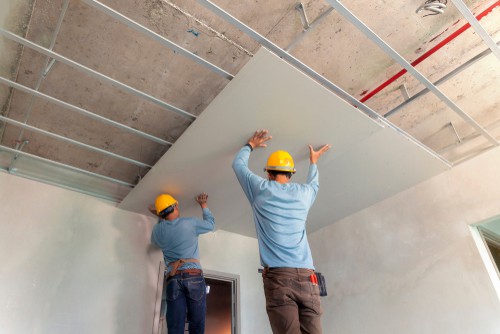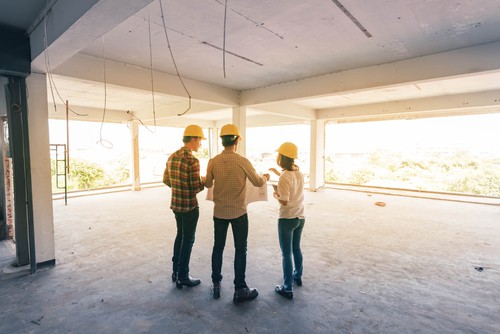
The Role of Professional Paintwork in Property Reinstatement
January 31, 2024
Exploring the Cost Factors of Restaurant Reinstatement in Singapore
March 15, 2024Understanding the Timeline for Shop Reinstatement Before Handover

Understanding the Timeline for Shop Reinstatement Before Handover
Understanding the Timeline for Shop Reinstatement Before Handover. In the bustling commercial landscape of Singapore, the end of a leasing period marks a critical phase for both tenants and landlords: shop reinstatement.
This process is not merely a contractual obligation but a significant undertaking that ensures commercial spaces remain functional, appealing, and ready for the next occupant.
The essence of shop reinstatement lies in its ability to transform a customized commercial space back to its original, neutral state, making it a crucial aspect of commercial leasing agreements.
This detailed guide aims to shed light on the comprehensive timeline and essential steps involved in shop reinstatement before the handover, ensuring tenants and landlords navigate this phase with clarity and efficiency.
Understanding Shop Reinstatement
Shop reinstatement is the process whereby tenants return the leased commercial premises to their original condition, as stipulated at the commencement of the lease.
This process is pivotal as it reflects the tenant’s respect for the property and adherence to leasing terms, setting the stage for a smooth transition to future tenants.
The Importance of Shop Reinstatement
- Preserves Property Value: Ensures the commercial space maintains its value and appeal for future leasing opportunities.
- Compliance: Meets the legal and contractual obligations outlined in the lease agreement.
- Readiness for New Tenants: Provides a blank canvas for the next tenant to tailor the space to their business needs.
Common Reinstatement Works
The scope of reinstatement can vary significantly based on the extent of modifications made during the tenancy. Common works include:
- Demolition of Temporary Structures: Removal of partitions, cubicles, or any non-permanent fixtures installed by the tenant.
- Restoration of Original Features: Repair or replace flooring, ceilings, and wall finishes to their original state.
- Electrical and Plumbing: Ensure all electrical wiring and plumbing works are restored to their initial configuration and are fully functional.
- Painting and Cleaning: A thorough clean-up of the premises, along with repainting to the original color scheme, if applicable.
Factors Affecting the Timeline for Shop Reinstatement

The timeline for shop reinstatement is influenced by several factors, each playing a critical role in the planning and execution phases.
The extent of changes made to the property during the lease period directly impacts the reinstatement process. More extensive modifications require a longer timeline for reversal.
Larger shops or those with complex modifications demand more time for reinstatement. The layout and original state of the shop also contribute to the complexity of the reinstatement work.
The timeline can be significantly affected by the availability of skilled reinstatement contractors and the timely supply of materials.
Engaging reliable contractors and securing materials well in advance are crucial steps in ensuring the project stays on schedule.
Typical Timeline for Shop Reinstatement

Understanding the typical timeline for shop reinstatement helps tenants and landlords allocate adequate time and resources for a smooth handover.
Initial Assessment and Planning (1-2 Weeks)
The reinstatement process begins with a thorough assessment of the premises to determine the scope of work required. This stage includes:
- Inspection: Conducting a detailed inspection of the premises to identify all areas requiring reinstatement.
- Permit Acquisition: Applying for and obtaining the necessary permits and approvals for the reinstatement works, especially if structural changes are involved.
Execution of Reinstatement Works (4-8 Weeks)
Following the initial assessment, the actual reinstatement works commence. This phase is the most time-consuming and involves:
- Demolition and Removal: The dismantling of added structures, fixtures, and fittings.
- Restoration: Repairing, replacing, or refurbishing walls, floors, and ceilings to their original condition.
- Electrical and Plumbing Works: Ensuring all installations comply with the original layout and safety standards.
Quality Checks and Rectifications (1-2 Weeks)
After the completion of reinstatement works, a thorough review is conducted to ensure all aspects meet the agreed standards. This phase includes:
- Inspection by Professionals: Engaging third-party inspectors or consultants to verify the quality of work.
- Rectifications: Making necessary adjustments based on the inspection results to ensure compliance with lease agreements and standards.
Coordination with Landlord and Property Management
Maintaining an open line of communication with the landlord throughout the reinstatement process is vital. Regular updates and discussions can help address concerns promptly and ensure both parties are aligned on the expectations.
Collaborating with the property management team is essential for scheduling inspections, facilitating access for contractors, and ensuring all administrative requirements are met for a smooth handover.
Contingency Planning and Mitigating Delays

Despite careful planning, the reinstatement process can face unforeseen delays. Identifying potential bottlenecks early and having a contingency plan in place is key to mitigating these delays. Factors such as supply chain issues, unexpected structural problems, or delays in permit approvals require a proactive approach and flexibility in the project timeline.
Handover and Final Inspection
The final stage of the reinstatement process involves preparing the premises for handover to the landlord. This includes a final cleanup, removal of any debris, and ensuring that all works are completed as per the lease agreement.
A final inspection by the landlord or their representative ensures that the reinstatement work complies with the lease terms and the premises are in the agreed-upon condition. Successful completion of this inspection signifies the end of the tenant’s obligations regarding the premises.
FAQ
What Is Shop Reinstatement, and Why Is It Necessary?
Shop reinstatement refers to the process of restoring a leased commercial space back to its original condition before the lease ends. It’s necessary because it’s typically a lease agreement requirement, ensuring that the property is ready for the next tenant and maintaining the premises’ value and condition.
How Long Does Shop Reinstatement Take?
The duration of shop reinstatement can vary widely depending on several factors, including the size of the premises, the extent of modifications made during the lease, and the availability of contractors.
On average, the process can take anywhere from 4 to 12 weeks. Planning and executing the reinstatement work well in advance of the lease termination is crucial to avoid delays.
Who Is Responsible for the Shop Reinstatement?
The responsibility for shop reinstatement typically falls on the tenant. Tenants need to review their lease agreements carefully, as these contracts outline the specific terms and conditions related to reinstatement obligations.
Can Tenants Negotiate Reinstatement Clauses in Their Lease?
Yes, tenants can and should negotiate reinstatement clauses when entering into a lease agreement.
This can include discussions about what specific reinstatement works are required and any conditions or exceptions. Negotiating these details upfront can save time, costs, and disputes at the end of the lease period.
What Happens if the Shop Is Not Reinstated Properly?
If a shop is not reinstated to the agreed-upon conditions, the landlord may withhold the security deposit or seek damages for the cost of reinstatement.
This can lead to legal disputes and additional costs for the tenant. Therefore, it’s essential to understand and fulfill reinstatement obligations to avoid such complications.
Understanding the Timeline for Shop Reinstatement Before Handover – Conclusion

Shop reinstatement is a crucial aspect of commercial leasing in Singapore, requiring detailed planning, execution, and cooperation between tenants and landlords.
By understanding the typical timeline and preparing adequately, both parties can ensure a smooth transition and maintain the value and appeal of the commercial space.
As each reinstatement project is unique, it is advisable to engage professional services to navigate the complexities of the process effectively.
Tenants and landlords are encouraged to thoroughly review their lease agreements to understand the specific reinstatement obligations.
Early engagement with professional reinstatement services can provide valuable guidance and ensure a compliant, efficient, and timely reinstatement process!
Are you seeking professional and reliable reinstatement services or contractors in Singapore? Contact us today!



